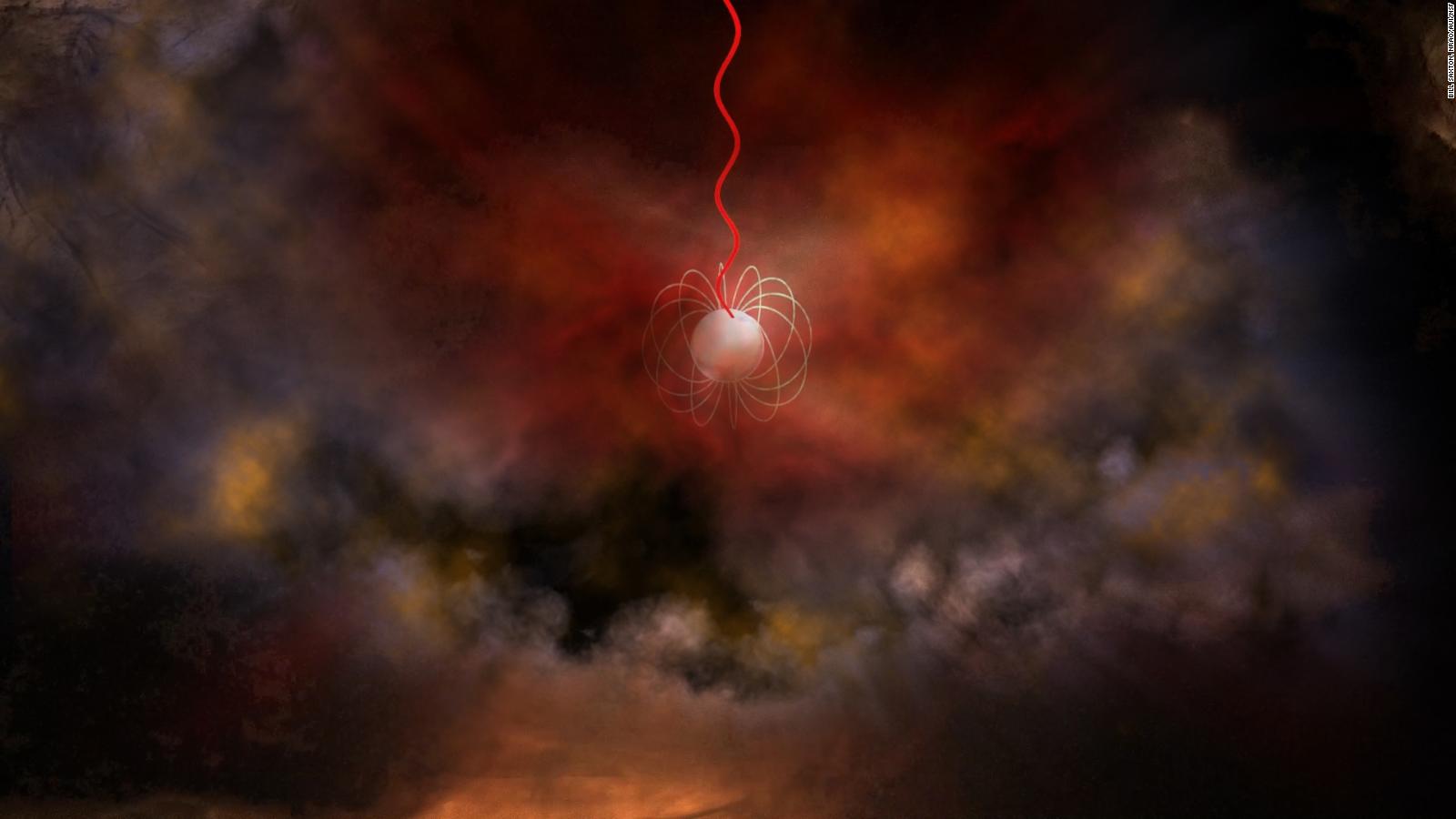(CNN) – Astronomers have discovered a mysterious fast and repeated radio explosion emanating from a dwarf galaxy 3 billion light years away.
According to new research, the cosmic object is strange compared to other radio explosion findings in recent years.
The Radio explosions, fast Or FRB, are millisecond-long bursts of radio waves in space. Personal radio explosions are released once and are not repeated. But rapid repetitive radio explosions are known to transmit short, intense radio waves several times.
Astronomers have been able to rediscover some radio explosions in their home galaxies, but have not yet determined the true cause of the pulses. Learning more about the origin of these bright and intense radio emissions will help scientists understand what causes them.

Carl G. This image, taken by a large team of Janski, shows the object while the FRB 190520 is active (in red).
On May 20, 2019, astronomers discovered an object named FRB 190520 while emitting radio waves. Researchers used a 500-meter-fast radio telescope in China and discovered the explosion in November 2019 in telescope data. Astronomers made follow-up observations and noticed something unusual: the object frequently and repeatedly emits explosions of radio waves.
In 2020, the group will be led by Carl G. of the National Science Foundation. The Jansky Very Large Array (VLA) Astronomical Laboratory used the Subaru Telescope in Hawaii to detect the appearance of an explosion. Subaru’s visible-light observations showed that the eruption came from the outskirts of a distant dwarf galaxy.
A Study Details of the findings were published Wednesday in the educational journal Nature.
Two of its kind
VLA observations also revealed that the celestial body was constantly emitting weak radio waves between repeated eruptions. This is very similar to another fast radio explosion known as FRB 121102: FRB 121102, discovered in 2016.
Early detection and tracking of FRB 121102 from its point of origin in the tiny dwarf galaxy more than 3 billion light-years away was a turning point in astronomy. This is the first time that astronomers have been able to determine the distance and environment of these mysterious objects.
“Now we need to explain this dual mystery and why FRBs and serial radio sources are sometimes seen together,” said Casey Law, co-author of the study, a radio astronomer at the California Institute of Technology. “Is this common when FRBs are young? Or is it a large black hole that causes explosions? Is it confusing a neighboring star? Reduce”.
Currently, less than 5% of the hundreds of speed radio explosions identified are known as repeaters, and only a few are still active.
But FRB 190520 was the only active radio explosion, meaning it had never been “turned off” since its discovery, said De Li, chief scientist at the Radio Division of China’s National Astronomical Laboratories and chief scientist at the Rapid Action Center. Meanwhile, FRB 121102 said, “The famous repeater, previously known, will be dark for several months.”
New questions
Recent discoveries raise more questions, and now astronomers are wondering if there could be two types of fast radio explosions.
Kshitij Agarwal, co – author of the study as a doctoral student at the University of Virginia, asked, “Are repetitions different? And continuous radio emissions, is it common?” Report.
There may be different mechanisms that cause radio explosions or they may function differently at different stages of their development.
Previously, scientists speculated that rapid radio explosions were caused by neutron stars with incredibly strong magnetic fields, called dense remnants or magnetic fields remaining after a supernova called neutron stars.

This is an artist’s view of a neutron star with an ultrasonic magnetic field called a magnetic field that emits radio waves (shown in red).
FRB 190520 is considered a “newborn” substance because it was found in dense environment, the law said. That environment can be caused by materials released by the supernova that led to the formation of the neutron star. As this material disintegrates over time, the bursts of FRB 190520 may decrease with age.
In the future, Li wants to detect high-speed radio explosions.
“A consistent picture of the origin and evolution of FRBs will emerge in a few years,” says Li.
The law is excited about the implications of having a new type of radio wave source.
“For decades, astronomers thought there were two types of radio sources we could see in other galaxies: the growing supermassive black holes and the star-forming process,” the law said. “Now we say we can not classify it as one or the other! There is a new possibility and it must be taken into account when studying the population of radio sources in the universe.”





:quality(85)/cloudfront-us-east-1.images.arcpublishing.com/infobae/KTKFKR763RBZ5BDQZJ36S5QUHM.jpg)